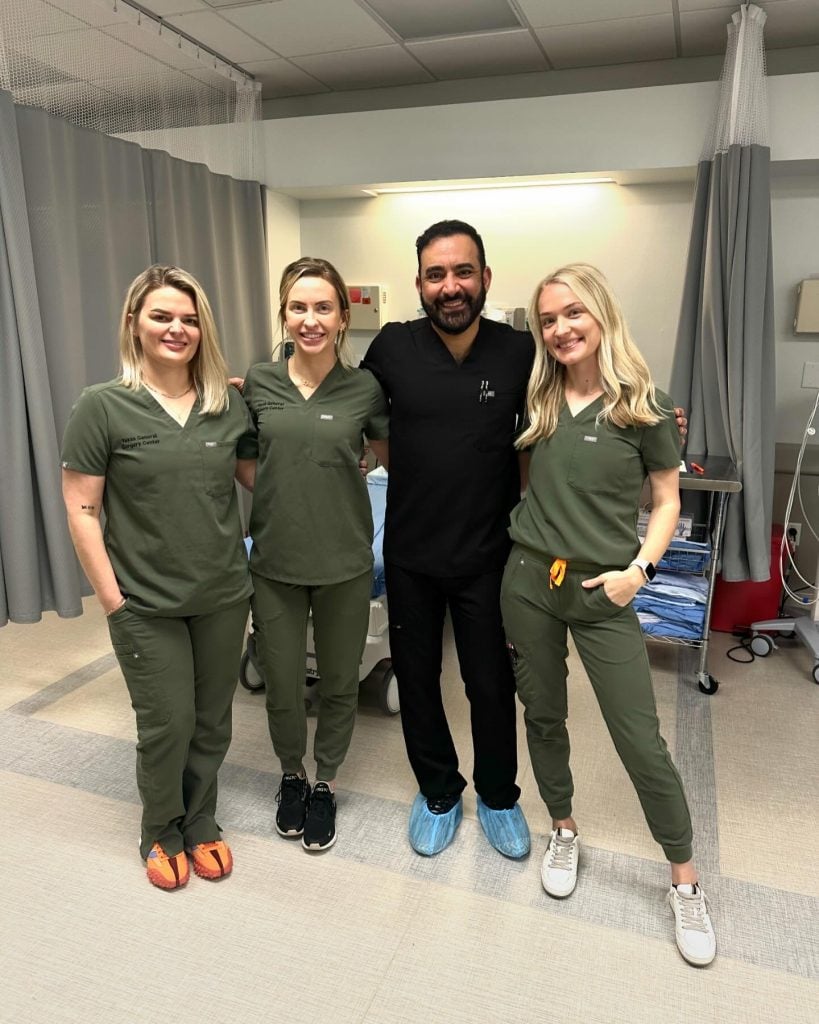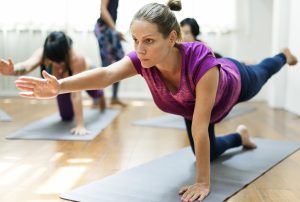Lower back pain is one of the most common complaints among adults—especially for those who sit for long hours, stand for work, or carry daily stress in their spine. Yoga offers a natural, effective way to reduce discomfort, improve posture, and prevent recurring pain. With regular practice, gentle yoga poses can help you build flexibility, strengthen core muscles, and release tension from tight areas that contribute to lower back strain.
How Yoga Supports a Healthier Spine
Yoga combines stretching and strengthening, which are key to long-term lower back health. When practiced correctly, it can:
- Increase flexibility in the hips and hamstrings, reducing strain on the lower back.
- Strengthen the core, providing better support for your spine.
- Improve posture and alignment through mindful movement.
- Encourage relaxation, helping your muscles and mind recover from daily stress.
According to Dr. Ghalambor, internist and anesthesiologist with fellowship training in interventional pain management from Massachusetts General Hospital, Harvard Medical School, “Yoga can be an excellent complement to pain management treatments. Gentle, controlled poses help patients strengthen stabilizing muscles and improve spinal flexibility—two crucial factors in reducing chronic lower back pain.”
Best Yoga Poses for Lower Back Pain Relief
1. Cat-Cow Pose (Marjaryasana-Bitilasana)
This flow between arching and rounding your spine helps improve flexibility and relieve stiffness.
- Start on your hands and knees with your wrists under shoulders and knees under hips.
- Inhale as you lift your chest and tailbone toward the ceiling (Cow).
- Exhale as you round your spine and tuck your chin to your chest (Cat).
Repeat slowly 8–10 times.
2. Child’s Pose (Balasana)
A gentle stretch for the lower back that encourages relaxation.
- Kneel on the mat, big toes touching, and knees apart.
- Sit back toward your heels and extend your arms forward, lowering your forehead to the mat.
- Breathe deeply, letting your spine and hips relax.
3. Downward-Facing Dog (Adho Mukha Svanasana)
Strengthens your back and stretches hamstrings and calves, helping ease lower back tension.
- From hands and knees, lift your hips toward the ceiling to form an inverted “V.”
- Keep your knees slightly bent and spine long.
- Press through your hands to elongate the back and shoulders.
4. Bridge Pose (Setu Bandhasana)
Builds strength in the glutes, hamstrings, and lower back.
- Lie on your back with knees bent and feet flat, hip-width apart.
- Press into your feet and lift your hips while keeping shoulders grounded.
- Hold for 10–15 seconds, then lower slowly.
5. Supine Twist (Supta Matsyendrasana)
Relieves tension in the spine and improves spinal mobility.
- Lie on your back and hug your knees into your chest.
- Drop both knees to one side while extending the opposite arm outward.
- Hold for 30 seconds, breathing deeply, then switch sides.
6. Sphinx Pose (Salamba Bhujangasana)
A gentle backbend that strengthens the spine while opening the chest and shoulders.
- Lie on your stomach and prop yourself up on your forearms.
- Keep your elbows under your shoulders and lift your chest slightly.
- Engage your core to avoid collapsing into your lower back.
7. Reclined Pigeon Pose (Supta Kapotasana)
Stretches the hips, which often contribute to lower back pain.
- Lie on your back, bend your knees, and cross your right ankle over your left thigh.
- Pull your left thigh toward your chest until you feel a stretch in your right hip.
- Hold for 30 seconds and repeat on the other side.
Tips for Practicing Yoga Safely for Back Pain
- Warm up gently before each session.
- Avoid poses that cause sharp pain or discomfort.
- Focus on breathing and maintaining good alignment.
- Work within your range of motion—never force a stretch.
- Consider guided back pain yoga therapy sessions or core strengthening yoga classes near you for personalized instruction.
When to Seek Professional Help
If you experience persistent or severe pain, consult a healthcare provider. Yoga can be part of a broader treatment plan that includes medical evaluation, physical therapy, or interventional pain management when necessary.
Dr. Ghalambor explains, “Yoga works best when integrated into a customized care plan. At NorTex Spine & Joint, we often recommend therapeutic yoga as a supportive measure alongside medical treatments, especially for patients managing chronic pain or recovering from injury.”
Transparency Statement
While NorTex Spine & Joint provides specialized care, many reputable clinics offer similar treatments. Always seek multiple opinions before deciding on treatment.
Take the First Step Toward Relief
Whether you’re dealing with stiffness, muscle tightness, or chronic lower back pain, therapeutic yoga can help you restore movement and comfort naturally. Residents in Fort Worth, Allen, Coppell, and Garland, TX, can explore yoga therapy options or schedule a consultation at NorTex Spine & Joint Institute to begin a guided, personalized recovery journey.
Additional Resources:
https://www.mayoclinichealthsystem.org/hometown-health/speaking-of-health/7-common-low-back-pain-faq
https://www.webmd.com/back-pain/what-helps-with-lower-back-pain







